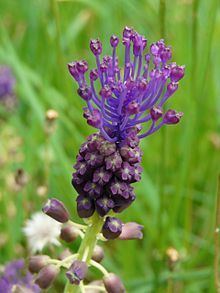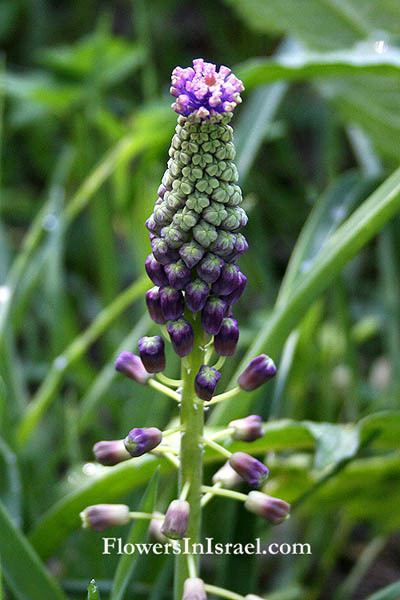Clade Monocots Rank Species | Clade Angiosperms Higher classification Grape hyacinth | |
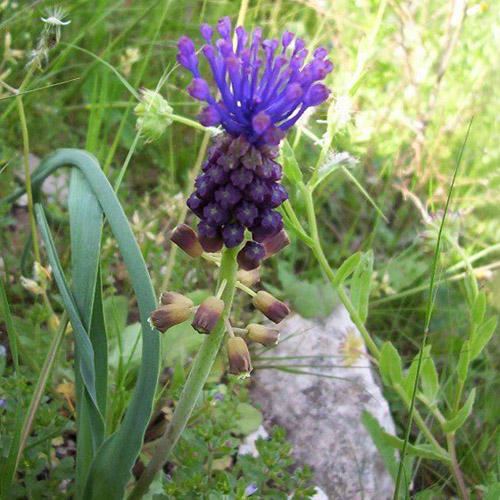 | ||
Similar Grape hyacinth, Muscari neglectum, Leopoldia, Muscari botryoides, Muscari armeniacum | ||
Leopoldia comosa top 7 facts
Leopoldia comosa (syn. Muscari comosum) is a perennial bulbous plant. Usually called the tassel hyacinth or tassel grape hyacinth, it is one of a number of species and genera also known as grape hyacinths. It is found in rocky ground and cultivated areas, such as cornfields and vineyards, in south-east Europe to Turkey and Iran, but has naturalized elsewhere. In southern Italy, Portugal and Greece, its bulb is a culinary delicacy.
Contents
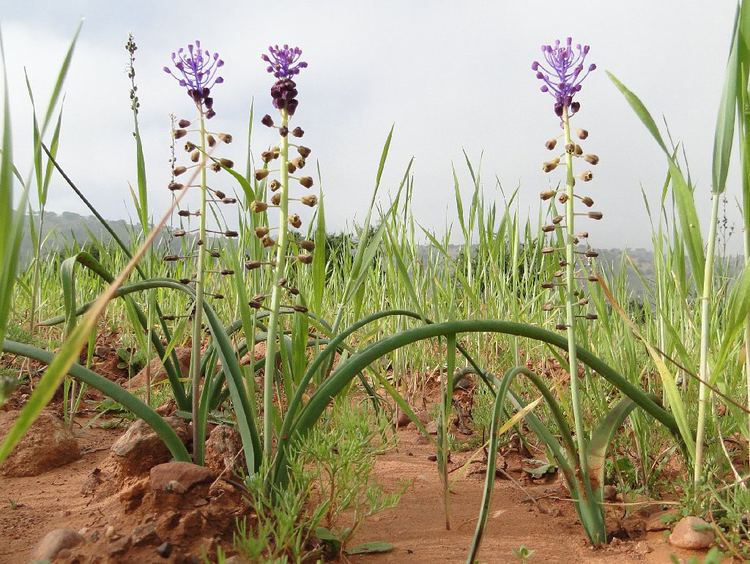
Described by Oleg Polunin as "a striking plant", it has a tuft of bright blue to violet-blue sterile flowers above brownish-green fertile flowers, which open from dark blue buds. This tuft gives rise to the name "tassel hyacinth". The flower stem is 20–60 cm tall; individual flowers are borne on long stalks, purple in the case of the sterile upper flowers. Mature fertile flowers are 5–10 mm long with stalks of this length or more and are bell-shaped, opening at the mouth, where there are paler lobes. The linear leaves are 5–15 mm wide, with a central channel.

Leopoldia comosa naturalizes easily and may become invasive. It has spread northwards from its original distribution, for example appearing in the British Isles in the 16th century.

In a cultivar called 'Monstrosum' or 'Plumosum', all the flowers have become branched purple stems.
Cuisine
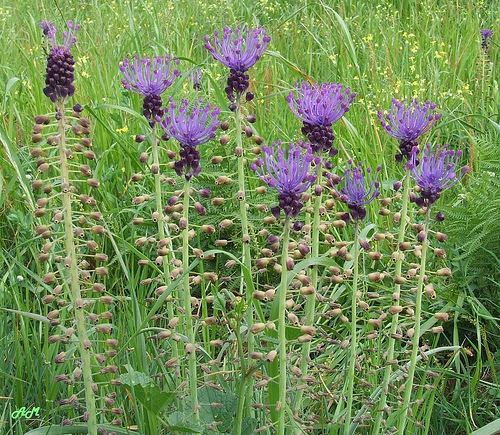
The edible bulb is eaten in some Mediterranean countries. In Apulia and Basilicata, it is cultivated and known as lampagioni or lampascioni. In Greek it is called βολβοί, βροβιούς volví, vrovioús. In Greece and especially on Crete, it is considered a delicacy and collected in the wild. The cleaned bulbs are boiled several times, pickled. and then kept in olive oil.
